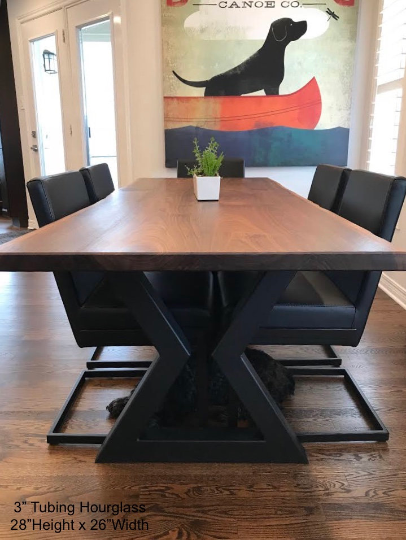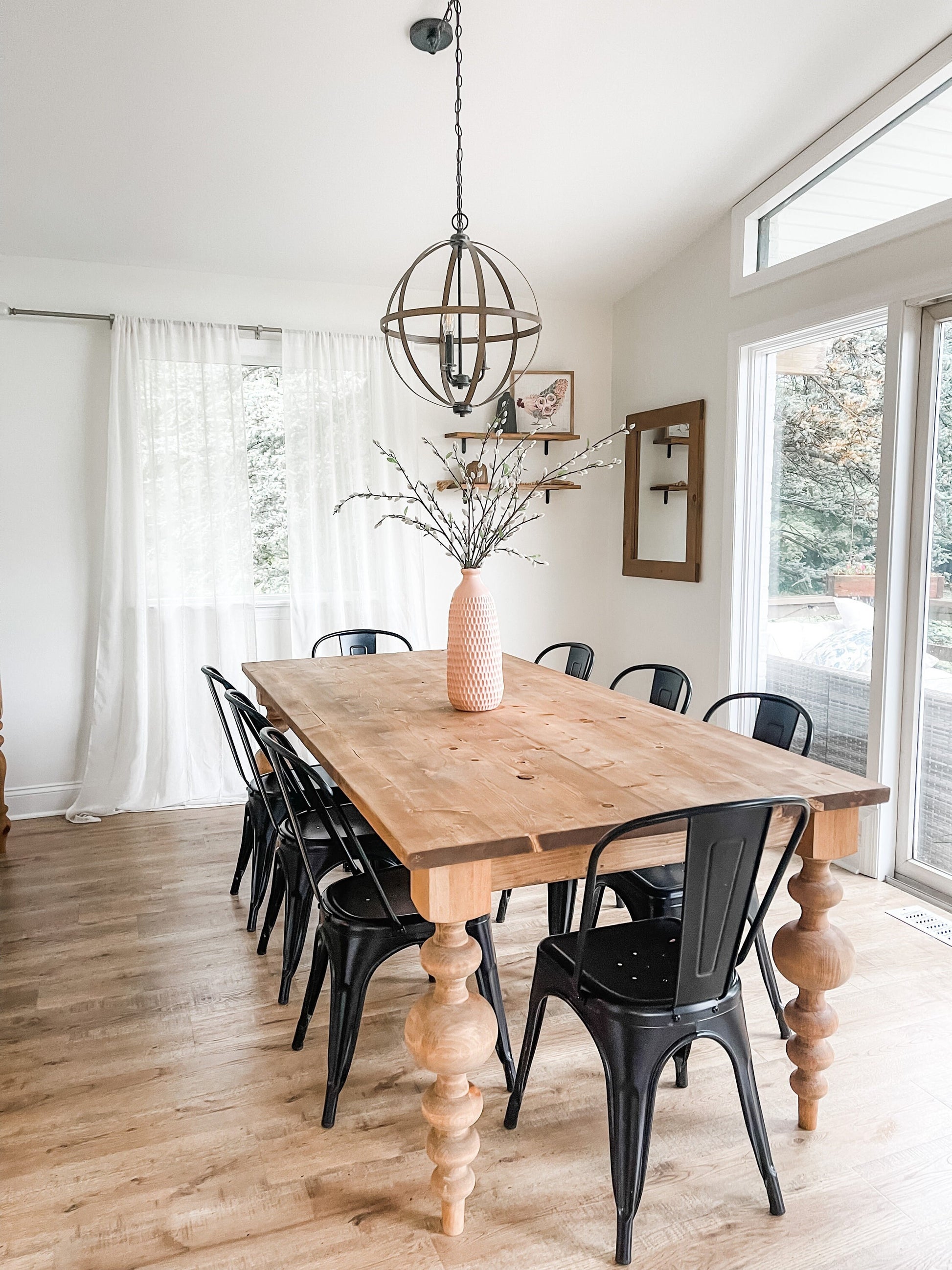Why Custom Dining Room Table Legs Are Worth the Investment
Why Custom Dining Room Table Legs Are Worth the Investment
Blog Article
Specialist Tips for Putting Up Eating Space Table Legs for Maximum Stability
When it concerns mounting dining-room table legs, achieving optimum security is vital for both performance and visual appeals. The process starts with choosing the best products and hardware, adhered to by careful placement and consideration of weight circulation. Each action plays a critical role in making certain that the completed product stands up to everyday use without jeopardizing safety or layout stability. Nevertheless, recognizing the nuances of these elements can dramatically influence the overall result. What particular strategies can improve security even better?
Choose the Right Legs
When choosing the ideal legs for your dining-room table, it is necessary to think about both capability and aesthetic appeals. The legs you pick will significantly impact the overall style and security of the table. Review the table's intended use; if you expect constant gatherings, stronger legs, such as those made from solid timber or steel, may be much more appropriate, as they use raised sturdiness and assistance.
Basic dining tables generally vary from 28 to 30 inches in elevation, so make sure the legs line up with this standard for convenience. Conical legs can add a contemporary touch, while transformed legs may convey an extra timeless aesthetic.

Select Appropriate Equipment
Exactly how can the appropriate hardware improve the security and durability of your eating area table? The choice of ideal hardware is important to making sure that the legs of your table are firmly attached and able to endure normal use. Top notch screws, screws, and braces offer the needed toughness to sustain the weight of the table, as well as any type of additional tons placed upon it throughout events or meals.
When choosing screws, go with those made from long lasting products such as stainless steel or brass, which resist rust and keep integrity gradually. The length of the screws is just as vital; they ought to pass through deeply right into the table's structure without endangering honesty. For bolted links, consider using lock washing machines to avoid loosening up because of vibration or movement.
Additionally, utilizing edge braces can add added assistance, especially for larger tables or those with much heavier tops. These brackets disperse weight uniformly and help preserve the table's form. Guaranteeing that the hardware you choose is proper for the specific materials of your table will certainly even more boost its general stability and longevity, enabling you to appreciate your dining experience for several years ahead.
Ensure Appropriate Positioning
Correct positioning of eating space table legs is important for both visual allure and useful security. To achieve optimal positioning, start by gauging the range from the table's corners to the leg add-on factors.
Use a degree during installment to verify that each leg is perpendicular to the tabletop. It is advisable to note the preferred leg positions on the bottom of the table with a pencil or concealing tape prior to protecting them.
Moreover, verify the placement after the preliminary screws are tightened, as modifications may be essential before totally protecting the hardware. By prioritizing appropriate placement, you not only enhance the table's total design yet additionally guarantee Bonuses that it remains secure and practical for several years to find.

Take Into Consideration Weight Distribution
After guaranteeing correct placement of the dining-room table legs, it's vital to consider weight distribution to enhance stability and capability. dining room table legs. Proper weight circulation is important in protecting against tottering and making sure that the table can support its desired load without risk of tipping or falling down
When positioning the legs, guarantee they are put at equivalent distances from the center of the table to uniformly disperse the weight across the framework. Think about the weight of the tabletop and any things that will often relax on it, such as ornamental items or tabletop appliances. Tables with much heavier surfaces need to ideally have legs positioned closer to the corners, as this maximizes the base of support and reduces the danger of instability.
Additionally, if the table is meant for use in a high-traffic area, take into consideration utilizing much heavier materials for the legs or Learn More Here including maintaining components, such as cross-bracing or a reduced shelf - dining room table legs. These modifications can aid preserve balance and protect against changing during usage. Ultimately, a well-considered weight distribution strategy will substantially enhance the table's general performance, guaranteeing it stays a eye-catching and practical centerpiece for your eating area
Test Stability Prior To Use
Checking the stability of the eating space table prior to use is an important action that ought to not be overlooked. If the table shows instability, determine the legs or joints that might require modification.
Next, inspect that all screws and fasteners are tightened up properly. Loose connections can cause instability and potential damage in time. If required, use timber adhesive on joints to boost stability, guaranteeing to enable appropriate drying time.

Verdict
To conclude, the installment of eating area table legs requires mindful consideration of materials, equipment, weight, and placement distribution to accomplish optimum stability. By selecting durable legs and top notch fasteners, making certain precise positioning, and dispersing weight evenly, the architectural stability of the table can be significantly boosted. Performing a security test before regular usage additionally guarantees that the table will certainly hold up against daily stress, thus supplying a secure and reliable eating experience.
When it comes to setting up dining room table legs, accomplishing optimum stability is vital for right here both capability and looks. The legs you pick will dramatically impact the general style and security of the table (dining room table legs). Typical dining tables commonly vary from 28 to 30 inches in height, so ensure the legs line up with this criterion for convenience.Correct positioning of eating space table legs is essential for both aesthetic appeal and useful stability.In conclusion, the setup of dining space table legs requires cautious consideration of products, hardware, weight, and positioning distribution to achieve maximum security
Report this page